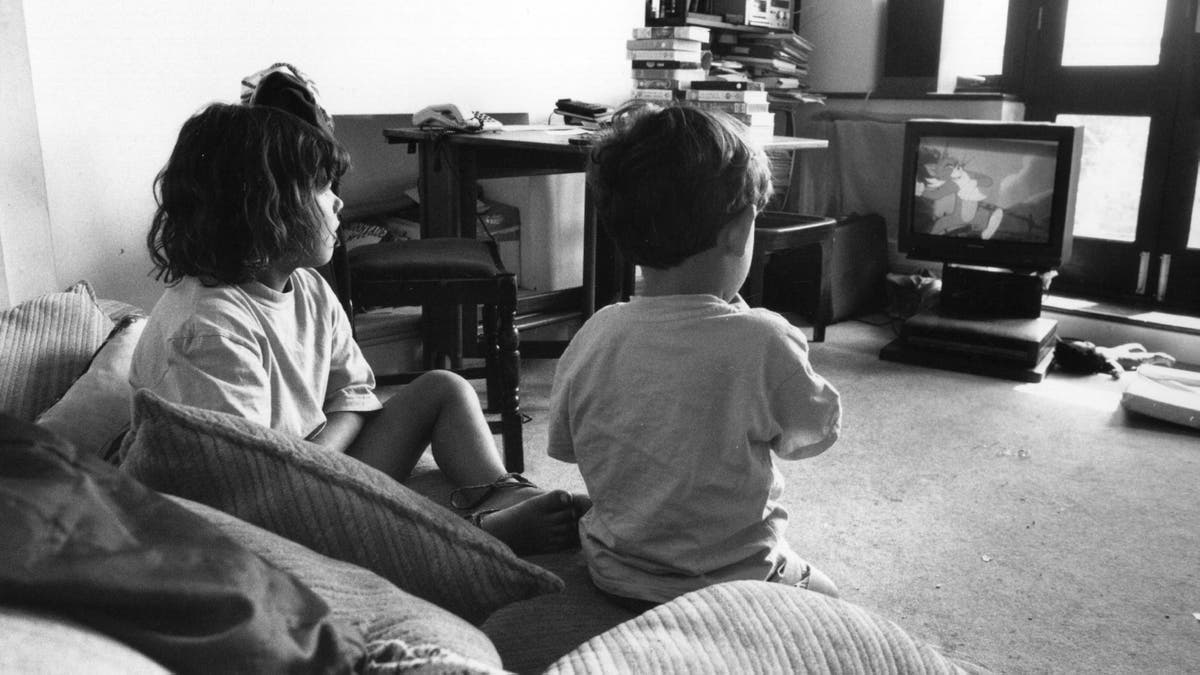
Two children watching a 'Tom And Jerry' cartoon on television, August 1995. (Photo by Steve Eason/Hulton Archive/Getty Images) (2008 Getty Images)
Could Latinos be falling on the wrong side of another digital divide?
Possibly. According to a new report from education organizations Joan Ganz Cooney Center and the Sesame Workshop, Latinos kids have more media exposure than any other group. They also had the biggest growth in media consumption between 2004 and 2009. In fact, they’re clocking the kind of hours that raise eyebrows among child development experts.
The report is a sweeping look at seven recent studies that indicate young children are increasingly consuming media from all types of sources, from MP3 players and video games, to the Internet, TV, cell phones and even books. The most striking numbers, of course, are the ones rung up by digital media: About 25% of three-year-olds go online at least once a day, for example. By age five, that figure is 50 percent.
Overall, despite some barriers to access, lower-income, Hispanic and African American children consume far more media than their middle-class and white counterparts.
According to numbers cited in the study, Hispanics ages 8 to 18 received an average of 13 hours of total media exposure each day in 2009, a sharp uptick from the almost-nine hours they were getting in 2004. White children, meanwhile, were exposed to just under eight hours per day on average in 2004, compared to 8 hours and 36 minutes per day in 2009.
Television is the most popular medium with Latinos and kids overall. According to the most recent Kaiser numbers, kids 8 to 18 watch about 4.5 hours of television a day. The study cites the numbers from Henry J. Kaiser Family Foundation saying Black and Latino kids watch about two hours more TV per day than white children. The American Academy of Pediatrics, meanwhile, recommends kids this age watch no more than two hours a day.
And while Black and Hispanic children have less home internet access than white children, Hispanics are spending 40 minutes more per day on the web. Once they reach their tween years, Latinos are spending more than 100 minutes each day playing video games, as opposed to the hour spent by white children.
The researchers point out that children need to be prepared for a digital future, and that the quality of the media consumed is key.
“The new affordances of digital media allow the children in Latino families, who are often the spokespeople for their families, to have another suite of tools to be able to be capable family leaders,” said Dr. Michael Levine, Executive Director of the Joan Ganz Cooney Center.
“For preschool children, there are a lot of educational options available for families,” said Dr. Jennifer Kotler, Assistant Vice President of Domestic Research for Sesame Street Workshop. “[Though] really as the children get older and media consumption increases, there is less and less available.”
Other studies, though, seem to show a reason for concern. Excessive screen time has been linked to a variety of problems in kids, including childhood obesity, delays in social development and poor grades.
“Children learn by interacting with their environment and with others, by running around, playing with friends, doing things with their parents, drawing—using their five senses,” says Liz Perle, editor in chief of Common Sense Media, a nonprofit organization that offers parents guidance on media and technology issues. “The bottom line is, it’s a zero sum game. Every hour spent watching TV or playing video games is an hour not spent doing something else.”
Contact Bryan Llenas at bryan.llenas@foxnewslatino.com or follow him at twitter @LlenasLatino.
Follow us on twitter.com/foxnewslatino
Like us at facebook.com/foxnewslatino
